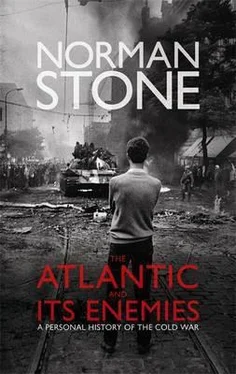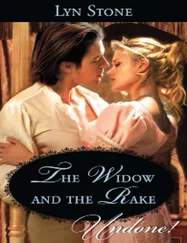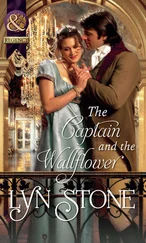But Johnson could not really bomb the essential targets, because he feared the resulting gruesome publicity, and because he did not want to provoke either Moscow or Peking. The fact was that the Americans were anxious not to push China too far: in 1964 she had exploded an atomic bomb, and in 1967 a hydrogen one (though at the time, in the middle of the ‘cultural revolution’, the country was widely in chaos). There were also great difficulties as regards the United Nations, then taken seriously as a ‘forum’ for ‘world opinion’. Even in 1975 only some two dozen of its 144 member states counted as democracies, and from 1945 to 1991 ‘Third World’ states were run, for half of the time, by their armies. Nevertheless, the organization — at least, capable of ‘peacekeeping’ — had some uses and had to be respected. In any case the North Vietnamese could bite back. They had acquired powerful defences, with 250 interceptors and 8,000 anti-aircraft guns, and one American plane was downed for every twenty-five sorties (whereas, later on, in the Gulf War, the figure was one in 700). The US air force bombed forest, smashed villages, and just caused the locals to hate the Americans all the more (a hatred returned with considerable sincerity). But the North also had the vast advantage that there was a safe supply line, the Ho Chi Minh Trail, which went through an area of Cambodia that jutted out towards Saigon itself, the ‘parrot’s beak’. The Americans had too few men to cover these long borders, and in any case they were not the light infantry that might have been effective.
To start with, just the same, events appeared to go in Nixon’s direction. In the first place there was the Americans’ always considerable learning curve. After Tet there was a period when the war seemed to be moving the Americans’ way, and a British expert (from his days in Malaya), Robert Thompson, gave sage advice: the war would have to be ‘nativized’ in the sense that the South Vietnamese should take over as far as possible; their army was given training of a sort. Whether this worked is still debated: there is evidence for and against, but the Northern Communists were certainly not popular, as the huge number of refugees always showed. There was also an American programme of ‘counter-insurgency’, ‘pacification’ — i.e. a carefully controlled reaction, involving the civilian population. Guerrillas or for that matter infiltrators could only really be countered if their areas of support were liquidated, whether by the physical movement of the potentially supportive population, or by that population’s inclining towards the anti-guerrilla cause. The Americans studied these matters, and had an educated team. Robert W. Komer came in May 1967 to head the Civil Operations and Revolutionary Development Support office, or CORDS, run by men who subsequently made considerable careers in the 1980s and even beyond, when the Right were again in charge in sensitive areas (Komer himself becoming ambassador to Turkey). The programme was called by the CIA ‘Phoenix’, an evocation of a Vietnamese symbolic bird, the Phung Hoan (the equivalent of the Central American Quetzal). One of the great problems hitherto had been the endless targeting of competent South Vietnamese officials, of whom tens of thousands had been assassinated. There was to be a riposte — the careful targeting of North Vietnamese ‘cadres’. In 1970-71, 10,444 of these were killed, generally in fire-fights.
Pacification would have meant an infantry war, and the generals did not want this. For a start, they had too few men to cover the long borders with Cambodia and Laos, and of their 540,000 men, only 200,000 were actually fighting. In fact the Marines did quite well with small patrols; and William Colby, Komer’s successor (in 1968), claimed over 20,000 killed, 30,000 captured and 180,000 defections by 1971. Much of the country did become quiet again, and foreigners could travel by road from Saigon to the coast, where there was a protected holiday resort. The watchword was now ‘Vietnamization’ because the Americans were expecting to withdraw, and Westmoreland’s successor, Creighton Adams, was under instructions to release troops as fast as he could. Vietnamization might have worked: however, one of the decisive elements in this pacification would have been mixed American-Vietnamese units, and Westmoreland was adamantly opposed to their existence: only a few thousand such mixed troops operated in the field. Relations were not good — resentment on the one side, contempt on the other, with linguistic barriers to complicate matters. At any rate, by spring 1970 there was a regular war and not a guerrilla one: the North Vietnamese were able to keep troops in great force in Cambodia and their army held what amounted to a regular front line through the mountainous and jungle territory on the official borderline. From there, they could strike at the old imperial capital (most of it was in reality nineteenth-century pastiche architecture), Hue. By stealth, Nixon — infuriated by the endless nonsense of the Paris talks — decided to strike there, together with the South Vietnamese army, which, Thompson said, was now capable of action. There was much military justification for this, given the North Vietnamese army’s closeness to Saigon, and that it was preparing an attack. The Americans’ attack itself did not go badly — much equipment destroyed, food supplies captured, and US casualties falling from ninety to fifty per week — but there was an explosion of rage inside the USA.
This war had now, in a sense, to be won at home. American opinion was in places violently, hysterically, hostile: 1967 had seen 100,000 march on the Pentagon and there were arson attacks in several universities, including Stanford, where the Institute of Social Anthropology was burned down. The National Guard was called out, and over-responded, in panic: in May 1970 at Kent State University four protestors were shot, two of them girl students on their way to lectures. Four hundred and fifty colleges were closed down. Nixon responded violently to ‘bums blowing up campuses’ and famously got support from building workers at one demonstration in New York (he invited their leaders, ingratiatingly, to coffee at the White House; on another occasion he smarmed at student protestors whom he encountered by chance in the early hours on a visit to the Lincoln Memorial). By 1972 the administration was simply held in derision by almost anyone in the United States who could read and write. At the same time, Nixon alienated his own bedrock supporters.
The opposition to the Vietnam War does not, now, look very impressive. After they had won, in 1975, the Communists massacred a quarter of the population of Cambodia, and threw out the ‘boat people’ from Vietnam, hundreds of thousands of the population, forced onto refugee boats, many sunk or destroyed by Malay or Thai pirates before they reached long-term refugee camps in Hong Kong. At the time, the American opposition was saying that the North Vietnamese were just another version of Tito’s Yugoslavians, potentially neutralist and in effect social reformers in the Henry George sense of one peasant, one plot. There are long lists, of the best writers and scholars in the country, who blundered — and who would, very soon, be disavowed by the very people they thought they were defending. John K. Fairbank of Harvard and The Cambridge History of China thought that Mao was ‘one of the best things that has ever happened to China’. The doyen of Asian studies in the USA, Warren Cohen, agreed. His principal target was Dean Rusk, craggy provincial Protestant with a moral sense: who now looks right? Barbara Tuchman said that America was repeating the mistakes of the fourteenth century, when paranoia and the Black Death stalked the land; she wrote in Foreign Affairs that Chiang Kai-shek had been wicked, that in China famine had been ‘eliminated’. Marilyn B. Young recycled Leninist propaganda ( The Vietnamese Wars 1945-1990 (1991)) to the effect that peasants with a back garden of rice-land were ‘exploiters’, and ‘concerned Asian scholars’ talked nonsense of the same sort. When the anti-Nixon people took over, their performance was lamentable. The fact was that a million people fled the North when independence came and a further million and a half when the Communists took over in the South. One of the Asian scholars was Chalmers Johnson of Berkeley, who complained of the student opposition that they never took his books out of the library. David Halberstam, who became the veteran journalist in the South, blamed the McCarthy persecution of the ‘Asia hands’ for the American inability to understand what was going on. Even a well-made film such as The Killing Fields , about the Cambodian horrors, somehow fails to mention Communism as the cause of them.
Читать дальше












![Edward Ellis - Adrift on the Pacific - A Boys [sic] Story of the Sea and its Perils](/books/753342/edward-ellis-adrift-on-the-pacific-a-boys-sic-s-thumb.webp)